- Duration:
- 26 minutes, 16 seconds
Cultural landscapes embody a dynamic and often difficult facet of the National Parks’ 21st Century preservation mandate—places characterized by their essential reflection of both natural and human forces on the land. Cultural resource managers must often confront the growing stresses of climate change at the park unit level, demonstrating a need for strategic decision-making guidance responsive to both climate events and climate trends. This paper describes a synthesis of IPCC scenario-based projections and historic landscape field assessment methods; the approach focuses on selected case study sites located within the NPS Pacific West Region. Historic impacts as well as potential climate-related vulnerabilities facing character-defining landscape features are addressed, with implications for future management of NPS-designed historic landscape resources. Bios Robert Z. Melnick, FASLA, is professor of landscape architecture at the University of Oregon, and a Senior Cultural Resource Specialist with MIG, Inc, a consulting firm in Berkeley and Portland. His current work, with the UO Cultural Landscape Research Group in the Institute for Sustainable Environment, addresses the impact of climate change on cultural landscapes. Melnick is co-editor of the award winning book, Preserving Cultural Landscapes in America, published in 2000. In 2008, he was awarded the James Marston Fitch Award by the National Council for Preservation Education for lifetime achievement in historic preservation education. Noah P. Kerr is a graduate research fellow at the University of Oregon, engaged in Ph.D. studies in landscape architecture. His work with the Cultural Landscape Research Group investigates climate change effects on cultural landscapes in the National Parks. Kerr’s previous work includes preservation consultation and cultural resource management research in the Pacific Northwest and New England. He also holds an M.S. in historic preservation, and served with the Pacific Northwest Preservation Field School’s field assessment team from 2011-13.
This presentation is part of A Century of Design in the Parks: Preserving the Built Environment in National and State Parks, June 21-23, 2016, Santa Fe, New Mexico.
Robert Melnick: …and I wanna also offer my extreme thanks to Kirk, Mary, and Debbie, and everyone else for putting this great symposium together. As my colleague, Lori Matthews, said yesterday, we should do this every year or at least every other year. So thank you, Lori, for that piece.
…I was going to start the presentation but I want to say, to begin with, that what you're really seeing today is the middle of a loaf. You're not seeing the beginning and you're definitely not seeing the end. This is more of a report on work in progress: kind of where we are on this very long-term and very ongoing project that you'll hear as you see support from many, many people's service and without. So with that, I'm going to let Noah start and then I'll take over about halfway through.
Noah Kerr: Thanks, Robert. I'd like to add my personal thanks to the milieu. I think particularly because NCPTT…in these years is offering a very welcoming and very vibrant portal for a lot of people in my age group, aspiring teachers and researchers, to dig deeper on these issues.
So with that, during the past half-century, the national park system has witnessed profound growth … during the past half-century, the national park system has witnessed profound growth in recognition of its cultural resource inheritance. Today's cultural landscape inventory system (CLI), culminating in the standardized data base by 1998, offers a case in point. From the 1960s forward, expanding consideration for historic landscapes through prepared historic ground reports and formal recognition of historic sites by 1968, communicated a broadening perception of cultural significance in the wake of Mission 66. With emergence of technical guidance by the early 80s, this realm of resource stewardship highlighted a deeply entwined relationship. These resources exist as a nexus of distinct human and natural forces acting on the land. Moreover, their lasting historic character remains defined by it: a simultaneous experience of natural and cultural realms.
The relationship continues to inform management practice today, underlining these places: inherent biological and cultural dynamism. It also guarantees persistent, and, as many of you are all too aware, frustrating at times, change in historic features. Heritage planting reaches the end of its natural lifespan. Rain and wind wear out soil. Ecological succession happens. Effective stewardship, according to many such realities at times, requires accommodating change at one scale, while working to slow or even arrest it at others.
Climate change now brings a new enigma into our conception and care of these places. … shifting systems, both natural and human, influence the efficacy of existing tools in landscape preservation, like condition assessment. The proverbial target appears to be moving, perhaps indefinitely. Rejected shifts and familiar ranges of climate extremes invoke disquieting prospects, including alterations to air temperature and precipitation.
Concerns regarding changing sea-level affecting costal environments, like the Pu'ukohola, a National Historic Site in Hawai'I, poses yet another dimension to potential climate hazards. At its core, acknowledging uncertainty is central to any useful response. This remains particularly important for a region encompassing diverse land forms and systems, like the Pacific West. Severe climate event frequently demonstrate a recognizable effect, and are rightly concerning. In one recent instance seen in Death Valley, convective rain fall triggered the October 2015 flash flood of Grapevine Canyon. In two days, the area received the rough equivalent of its annual historic norm for precipitation jump three to four inches. The resulting flooding wrought havoc across Scotty's Castle Historic District, with velocities exceeding 3,000 ft³/sec. To effectively gage the implications of potentially more frequent extremes affecting cultural landscape features beyond a single park setting, managers would benefit from a systematic means of distinguishing baseline conditions.
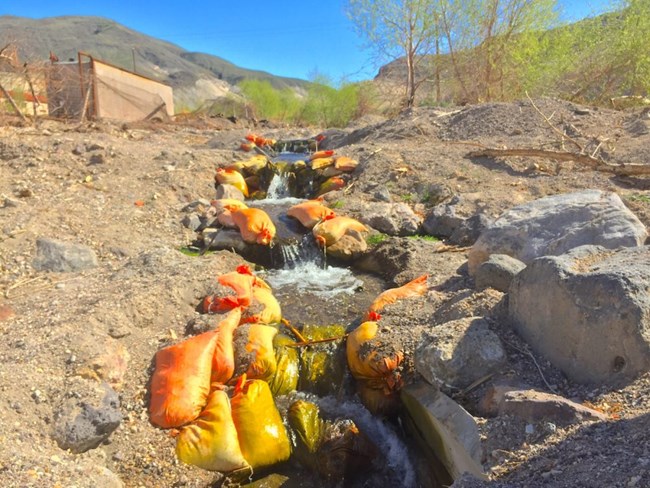
Cultural landscapes continue to invite our fascination as living, evolving systems. Yet, existing evaluations and management protocols retain the underlying assumption that a controlled, predictable equilibrium governs these sites over time. The paradigm must shift along with effective climate response tools, as we're seeing all too frequently and all too often now. Maintaining a clear-cut sense of some historic attributes protected in these sites meanwhile, as evaluated according to the National Register CLIs, becomes an increasingly slippery prospect. A horticulturist works to delay entropy in elderly specimen plants, while a preservation carpenter wrestles with an increasing scarcity of old growth timber for historically appropriate building repairs. The passage of time marked in this year's Organic Act sentential serves as a reminder of the depth of such changes quietly at work.
Recognizing the critical role of climate variables as moving parts, meanwhile, amplifies the need to differentiate inherent system change from the uncertainty implicit in climate shifts. To do so appreciates the climate impact as a key influence in park character. Moreover, the perspective enables us to better engage what Angie Richmond has called "the whole story of cultural landscapes and park legacy." The project we'll be discussing here does not aim to catalog the effects of climate change across an entire region, nor can it offer calculations of disaster. Rather, it seeks to aid in early-stage program discussion-making, addressing the need for adaptive cultural resource management planning and frameworks.
Through a cooperative agreement with the NPS Pacific West Region Cultural Resources Division, and grant support from NCPTT, ongoing work from the University of Oregon's cultural landscape research group, or CLRG, addresses a series of park landscapes. This paper discusses ongoing aspects of the effort, as Robert alluded to, which applies climate research to the investigation analysis of existing PWR cultural landscapes. The 2013 assessment reports by working groups one through three of the United Nations' Intergovernmental Panel on Climate Change, what we call IPCC, encourage us to amend existing cultural resource amendment … excuse me, let’s start that again… encourage us to amend existing cultural resource assessment protocols with an added layer of adaptability to climate change. Such efforts should acknowledge that changing conditions reveal the delicate and sometimes tenuous nature or policies surrounding the evaluation of regional place. In addition to vulnerability seen in diverse landscapes…, as in the case of the Pacific Northwest, asserts Dalton, Mote, & Snover, these changes mean that many of the climatic assumptions inherent in decisions, infrastructure, and policy will become increasingly incorrect.
As much has already become clear, unfortunately for cultural landscapes like Buckner Homestead Historic District, were concerns situated in Lake Chelan National Recreation Area, where concerns over catastrophic river avulsion, riparian erosion, and wildfire persist. Elsewhere in the region, similar patterns have already emerged, as those familiar with the Nisqually River inundation at Mount Rainier's Longmire can attest. This is the new reality facing many cultural landscape stewards, and a reality underlying the landscape heritage of the coming century. Attempts to attribute climate change depredations on a site-specific basis, however at best, rise a convoluted test.
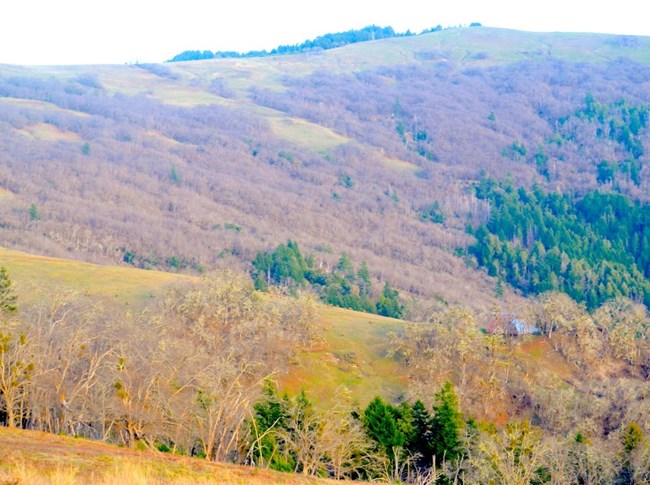
Park cultural landscapes offer few exceptions and are subject to broad variation and complexity - preaching to the choir here, of course - particularly across expansive rural spatial scales. The Lyons' Ranches Historic District, for one, entails more than 5,000 acres across numerous and deeply interrelated natural and cultural systems along the Bald Hills spine of Eastern Redwood National Park. Its historic prairie systems, sheep-grazing outpost, fur forest, oak woodland, remnant orchard circulation systems, and wildlife cannot be addressed in isolation from one another. These continue to be shaped by diverse influences, often conifer succession, coastal fog incursion, invasive vegetation, ecological restoration efforts, traditional cultural practices, historical changes in land use, and even contemporary incidents of vandalism, to name a few. There have been thefts of first-growth redwood from the barns where thieves have been stealing it to use in other projects.
In contrast, the Buckner landscape inhabits a contemplatively compact 105 acres, and is intimately situated in those broader systems affecting the narrow Stehekin River Valley, its surrounding second-growth conifer forest and enclosing North Cascade Range. Forests past and present inevitably mingle in a cultural landscape. Still, a clear conception of the interplay between broad climate deviations and vulnerability, specific to discrete character-defining features remains a focus in assessing climate risk.
To that end, this project emphasizes a key temporal distinction in an attempt to differentiate the influence of known alterations to landscape systems from those as yet unknown. These efforts consider historical impacts or past undocumented changes, as distinct from present climate variables further separated from those vulnerabilities yet to become clear. Now this is a simplistic enough conceptual distinction: past, present, future, but within the kind of milieu of overlapping climate science with the kind of management protocols we look at in the Park Service, this gets to be a pretty sticky inherent issue, as Robert will get a little further into. So I'm going to pass it off to him to discuss some of our research process and methods that we've been working on.
Robert Melnick: Thanks, Noah. From its inception, the aim of this project was to integrate climate science with cultural landscape assessment protocols. And to say the least, there was a steep learning curve for all of us on the cultural landscape side. As a comprehensive survey across the NPS Pacific West Region cultural landscape types, "this work examines climate vulnerability and cultural landscape characteristics and features seen through both region-wide and localized lenses, according to selected climate variables." And we'll talk about those in a minute.
At their core, both levels of investigation share two fundamental questions: First, which system's characteristics or features are likely to be adversely affected by projected changes, and I want to emphasize that likely is a critical term here. And, no less significantly, why and how are they likely to be vulnerable. At the regional level, addressing these concerns aids development of a prioritization model for the Pacific West Region resource managers, allowing for cohesive strategies concerning shared regional attributes.
This documentary analysis pairs a region-wide overlay of significant characteristics and features by each landscape with climate projections at global, regional, and most importantly -most importantly - localized scales. We can talk about that at length about the issues of climate change. Additionally, this project includes a selection of six field case studies. The case studies capitalize on site-specific insights in order to ground truth broader analysis, but also to engage the vital insights of resource managers and specialists in the immediate context of their stewardship efforts. We refer to this as quantitative and qualitative data.
As of this writing, Pacific West Region manages 164 cultural landscapes, in which…for which CLIs have been completed with guidance – and really incredible guidance, I must say - from the Region’s Cultural Landscape Program. Team members on our team working closely with park service staff began by developing a working profile for each cultural landscape. Identifying, extracting, and summarizing those contributing landscape features inventoried within each CLI document provides an iterative technique to mine key data resources. This largely qualitative data then populates the working matrix organized by each landscape's alpha numeric park unit designation and CLI code, making sure that that will be usable into the future, as well as the cultural landscape characteristic type, which you are all familiar with, such as natural systems and features, circulation patterns, and so on.
As of any evolving body of documents, practical delays between certification of and updates to individual CLIs create inherent variations in the available information. For example, the CLI for San Francisco Maritime National Park’s Aquatic Park was certified in 2001, and that precedes the Olympic National Park’s Peter Roose Homestead by more than a decade. Next, IPCC, as Noah just referred to, and the US Geological Survey projections for air temperature, precipitations, sea-level rise (where appropriate) were paired with CLI feature lists. So we limited ourselves to air temp precipitations, sea-level rise for the purpose of this study.
Here, historic data and modeled climate projections are addressed at global, national, county, and park scales. Temperatures at Pu'uhonua O Honaunau National Historical Park in Hawai'i, for example, show increases of 3 °F during the past half-century, whereas modeled projections - and projections is the key word here - suggest potential or probable increases of 6 °F by the year 2100, against the base of 1950. Pairing climate projections with CLI feature and impact listing, then, creates a flexible analytical tool for assessing vulnerability. As the basis for a searchable data base, this kind of working index could also enable managers to cross-reference and compare across multiple landscapes, parks, networks, and other shared attributes. Development of this resource continues at the present time, as you've already heard, with guidance from program staff – and I really can’t say enough about the staff - of the Pacific West Region, the NPS Cultural Landscapes program, especially Susan Dolan and her staff, the NPS Climate Change Coordinator for Cultural Resources, Marci Brockman, who if you don't know her, you should know her, The NPS Climate Change Response Program out of Fort Collins, and the Pacific Islands Climate Change Cooperative, especially Stanton Enomoto out of Honolulu.
This process also advances work towards an applied model for analyzing vulnerability. As the effects of climate variables on individual landscape characteristics and features become more evident, so too does the possibility of more effectively establishing comparative scores for overall cultural landscape vulnerabilities. This would allow the park and region to set some priorities for where to act first, or at least with some priorities. Drawing on regional GIS resources, model development also takes on a spatially-explicit dimension. Ultimately, such a tool may assist managers in a prioritization of efforts and resources at regional and park levels.
The product of this analysis comprises a key desired outcome for the project, as well as a generous source of unanswered questions - and there will be unanswered questions. In transforming inventories of character-defining features into quantitative data, for example, how can we meaningfully represent the historic, often thematic character of these living landscapes? Can we in fact distinguish a working spectrum of vulnerability across such diverse places, while avoiding the temptation to privilege some contributing features over others? These are fascinating problems, to say the least, and we are still working on them.
This inquiry expresses the conviction that effective discussion of current landscape conditions resuscitates focused field investigation. At its outset, the project includes a determination of representative case study landscapes across the Pacific Region. This process negotiated ecological composition, geographical context, and condition attributes. Final selection of regional case studies locations referenced what were based on three very, very important considerations. So we went from 164 cultural landscapes to 6 case studies.
The first was we wanted to represent diversity across the NPS networks in the Pacific West Region. If you're not familiar with those networks, they're basically based on ecological zones, so they cut way across all traditional political boundaries. Second, we wanted to include a breadth of cultural landscape types, and this is critical: recognizing what cultural landscapes had become at the 30,000-foot level. We wanted to talk about them at the ground level. And third - and very importantly - we needed to work with park staff, who weren't only welcoming, but were really excited about what we were doing, because we recognized, as we have heard all week long, that park staff levels are not where they should be. They're excellent people, excellent professionals, and we need to recognize that by asking them to work with us, we were taking them away from their other assigned tasks. So we really were incredibly fortunate on the six sites we looked at to have people who were very welcoming and encouraging.
Each of the resulting case studies, and you can see them listed there on the left, follows a format intended to provide the field research team with updated awareness of landscape conditions. In effect, bridging the primary-source gap between impacts noted in the CLI documents (in many cases that were many years old) and those having since emerged. Field techniques incorporate a combination of ground-level reconnaissance, photo documentation, and field notation. And those field techniques are informed by a process of engaging directly with park staff. Advance preparation begins with a webinar-based discussion with a diverse group of site resource managers and specialists. This is just a screen from one of the webinars that we did. Contributing webinar participants have ranged in expertise from orchardist, archeologist, from wildlife biologist to fire ecologist, and address impacts both documented and recently emerging.
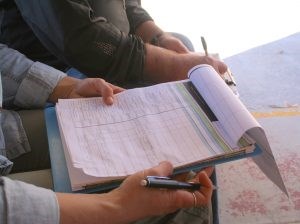
Building on this method with other rigorous visual techniques such as remote sensing, repeat photography, and so on, stands beyond the scope of current work, yet raises opportunities for future investigation. Like good researchers, we always say what we're not doing and what someone else should do into the future.
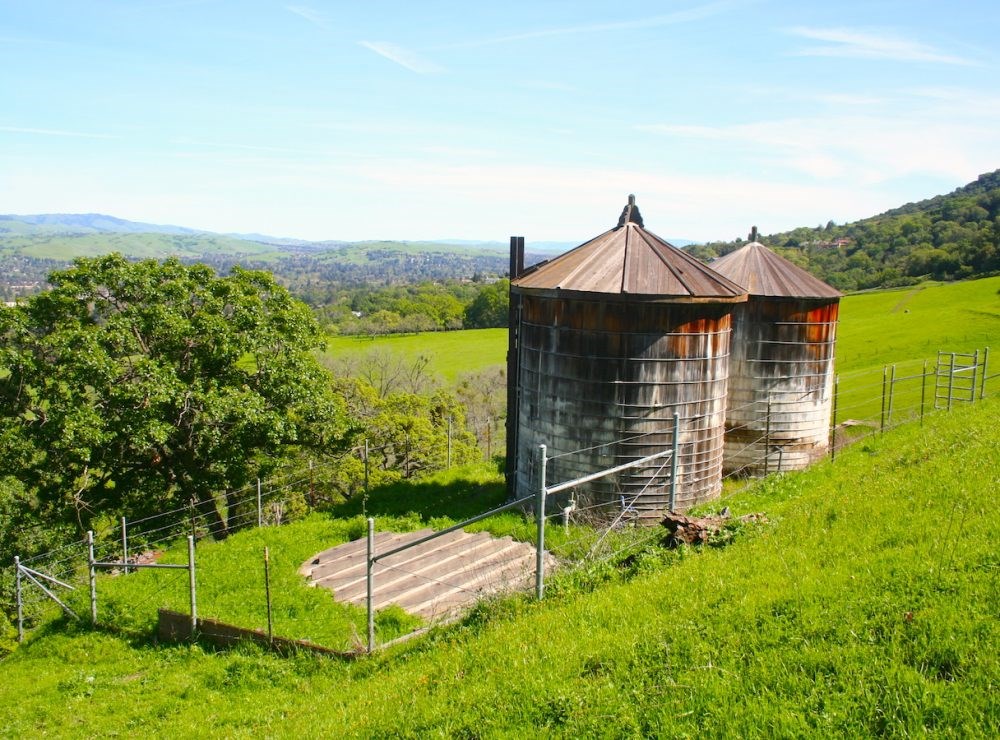
This approach may aid future efforts to track change in the same location over time, but remain limited to site-specific use for now. Within the CLI component hierarchy, retaining the sense of scale helps to anchor comparisons in landscape vulnerability. In some cases, impacts known to affect discrete features may influence vulnerability, as in the case of coastal wind effects on the traditional stone construction at Puʻukoholā Heiau on the Big Island.
Meanwhile, impacts caused as here by the 2015 Scotty's Castle flood event particularly affected broader systemic features such as hydrology, typography, and circulation. Other catastrophic climate events, including landslides and wildfire, may characterize a similar spectrum. Comparisons may also address relative severity, compared across similar types of impacts. Burrowing activity by ground squirrels, for example, now contributes to modest stress on the remnant walnut orchard at Eugene O’Neill documented as a form of pest impact on historic vegetation. In contrast, to crown damage wrought by local elk and and black bears within Buckner Homestead’s historic apple orchards.
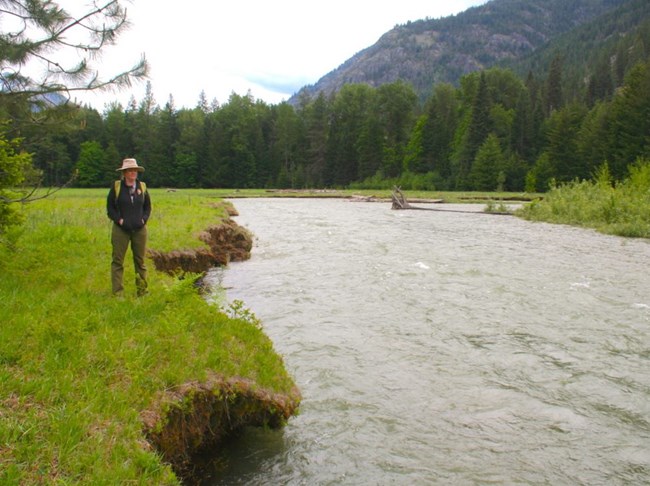
The concerns facing cultural resource managers in the era of climate change are substantial. Answering those challenges in cultural landscapes requires focused attention on several scales of both qualitative and quantitative investigation, as demonstrated in this multi-year research effort. The work also demands a deeper awareness of the historic range of cultural landscape dynamics and how that understood range of change may be affected by climate variables outside our historic lexicon. The greatest challenge perhaps, comes in accepting that there exists a multitude of unknowns, even within the scope of known variations. And with that, I'll just say that the work continues. Thank you very much.
Last updated: April 7, 2025
